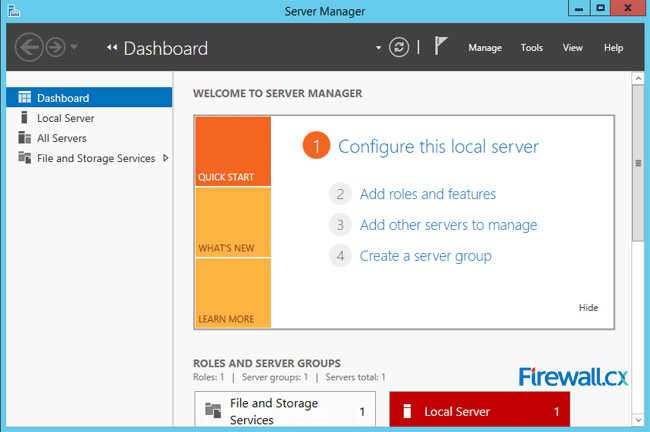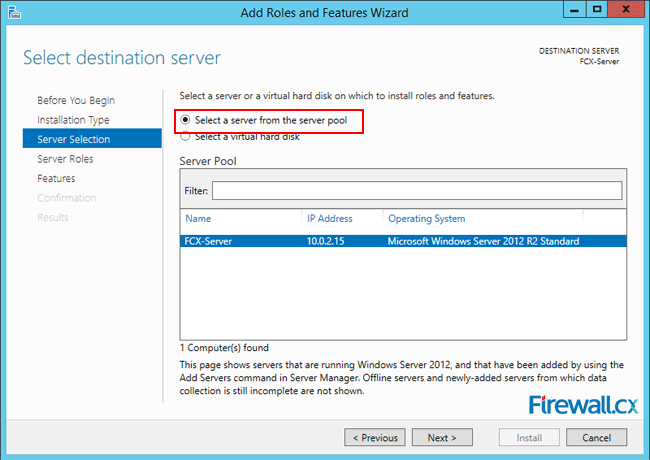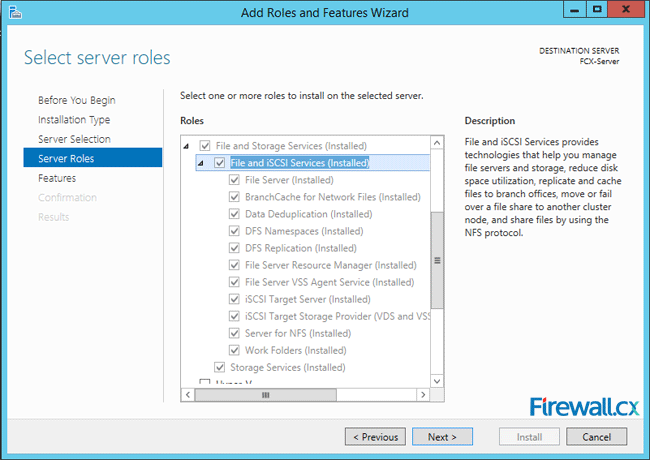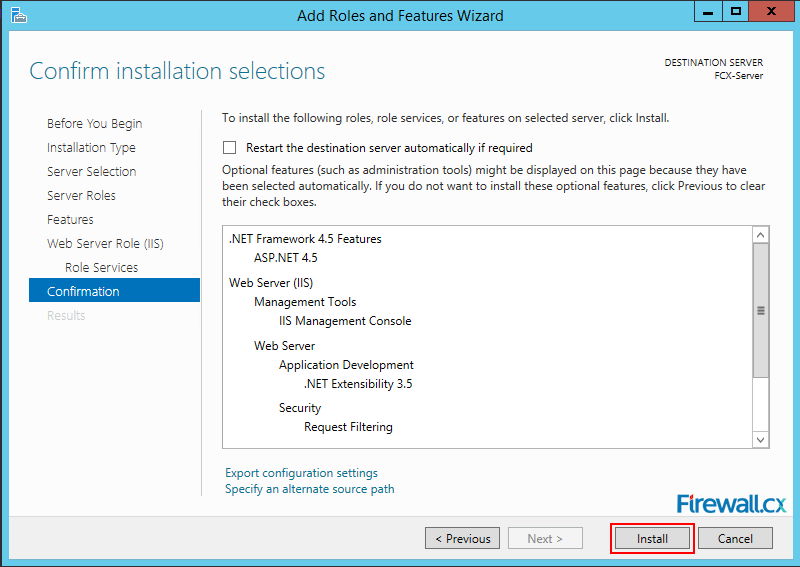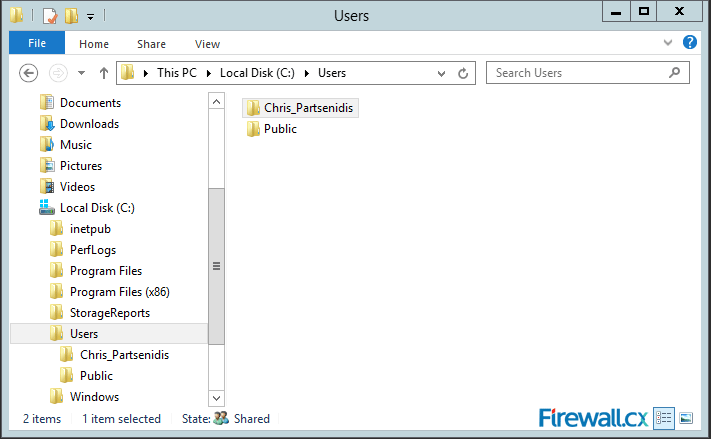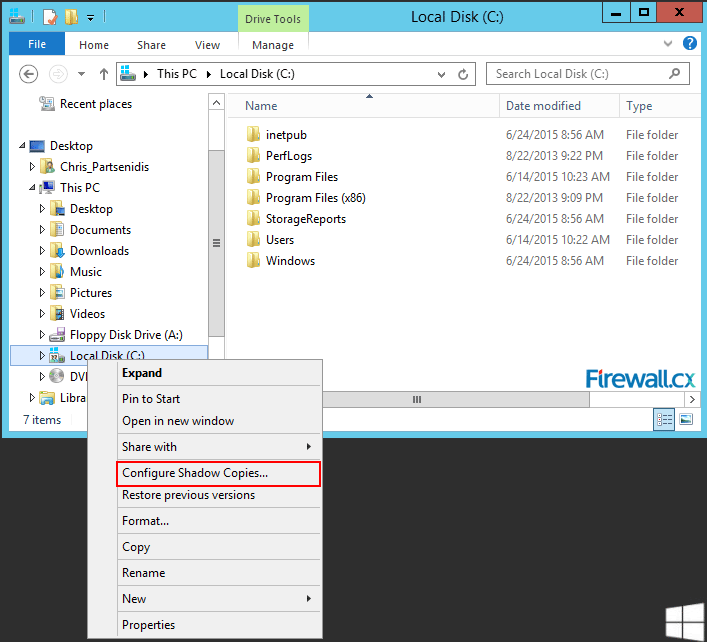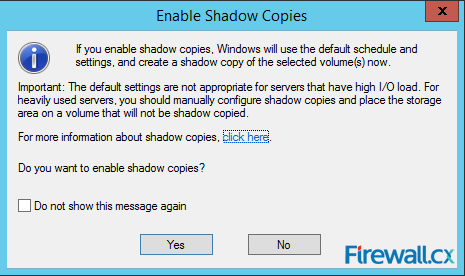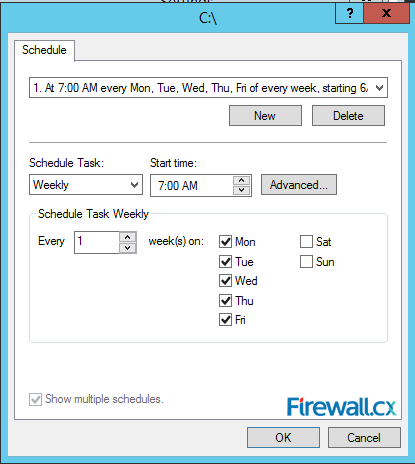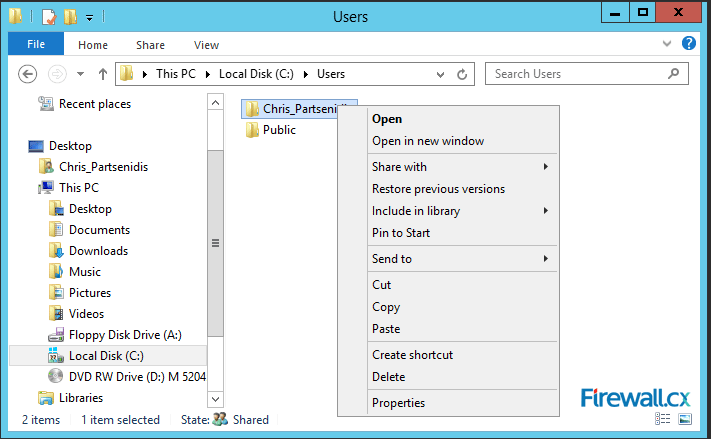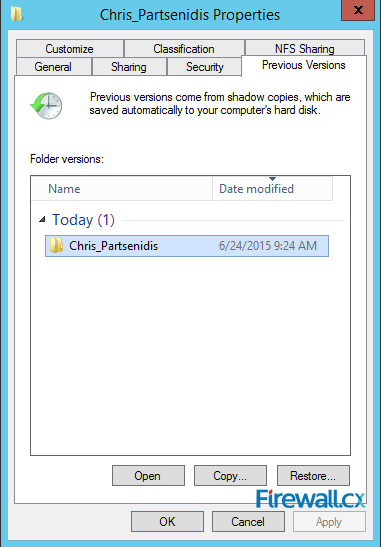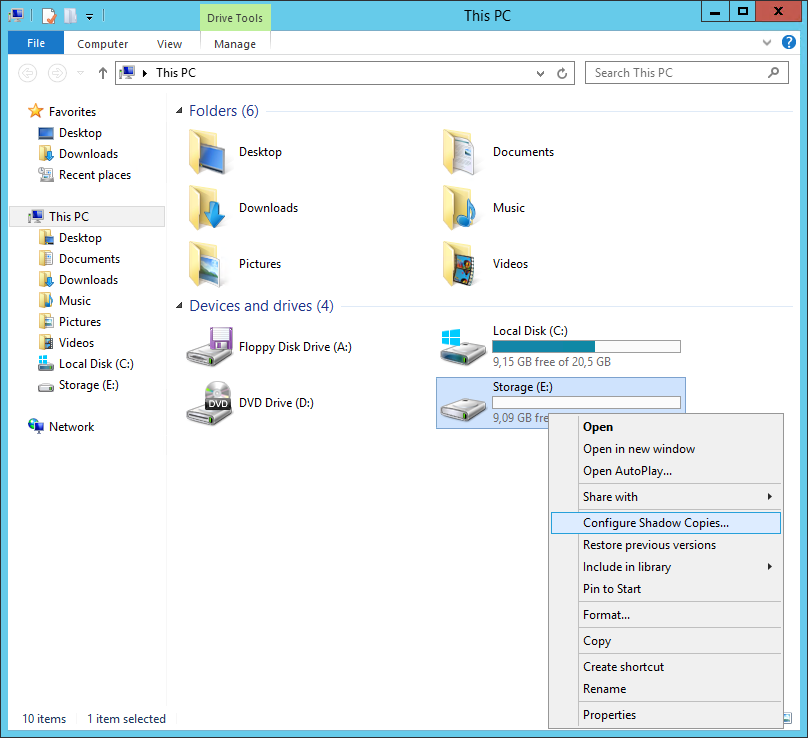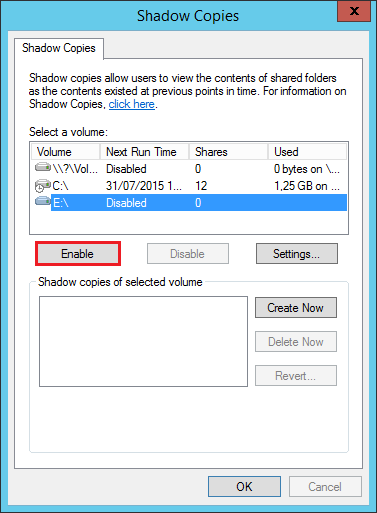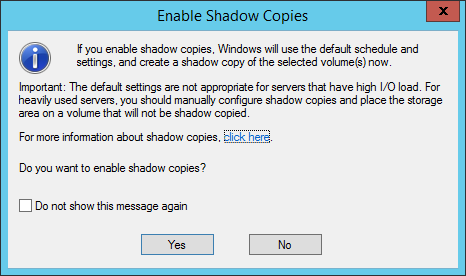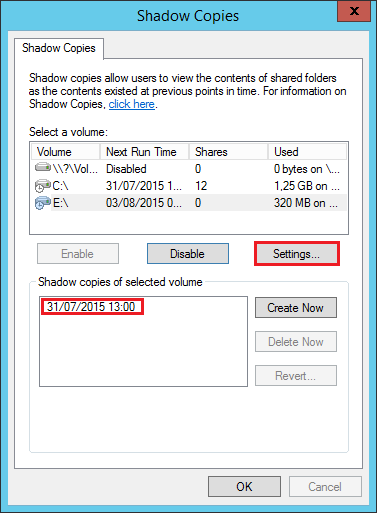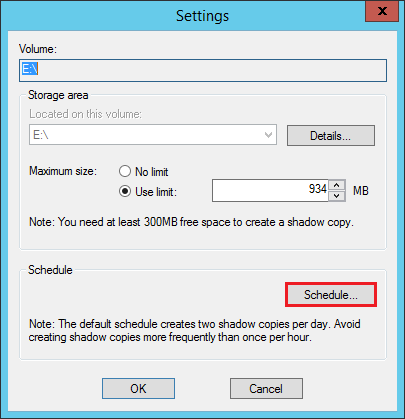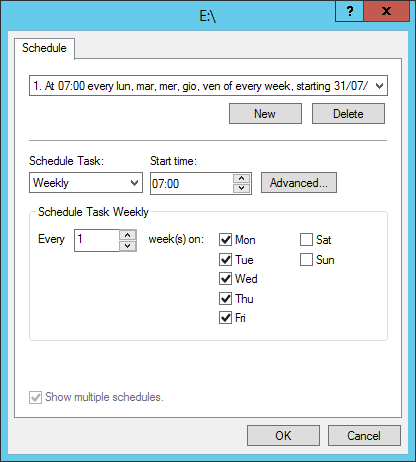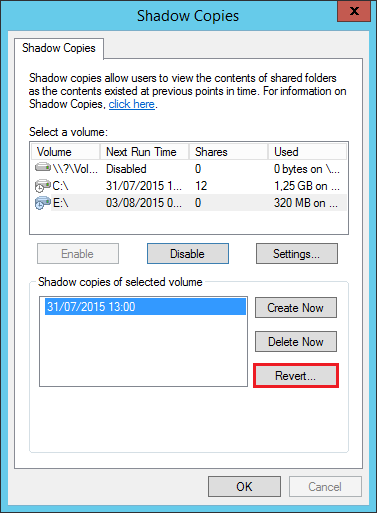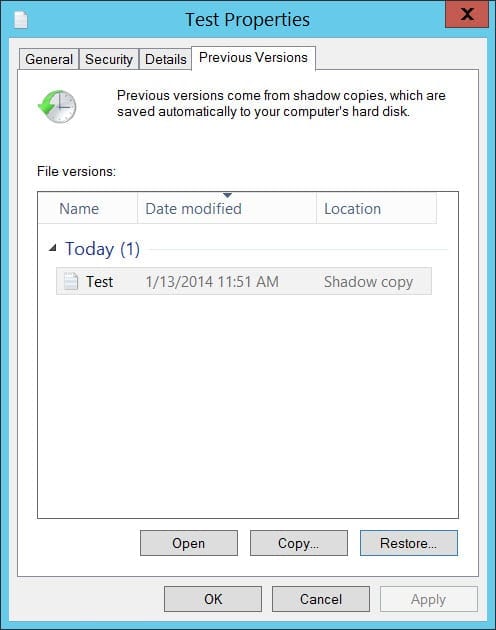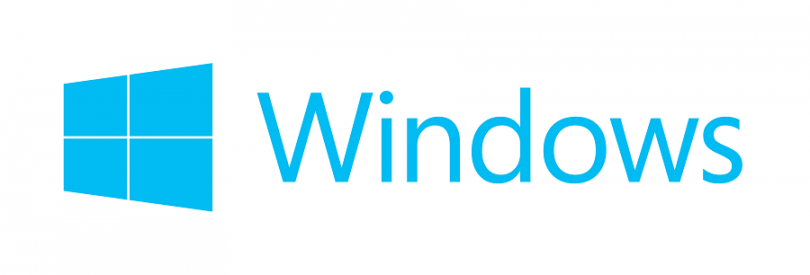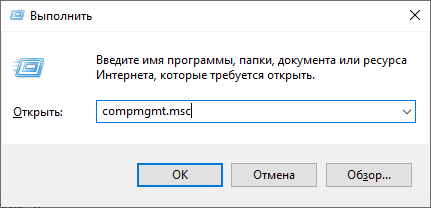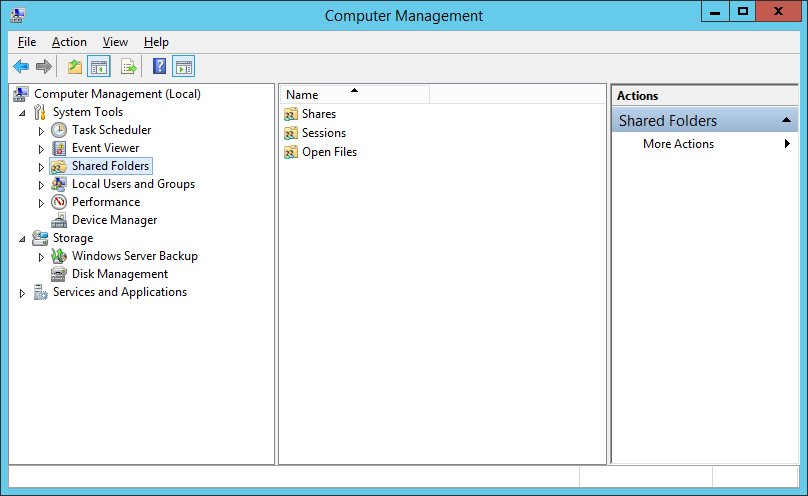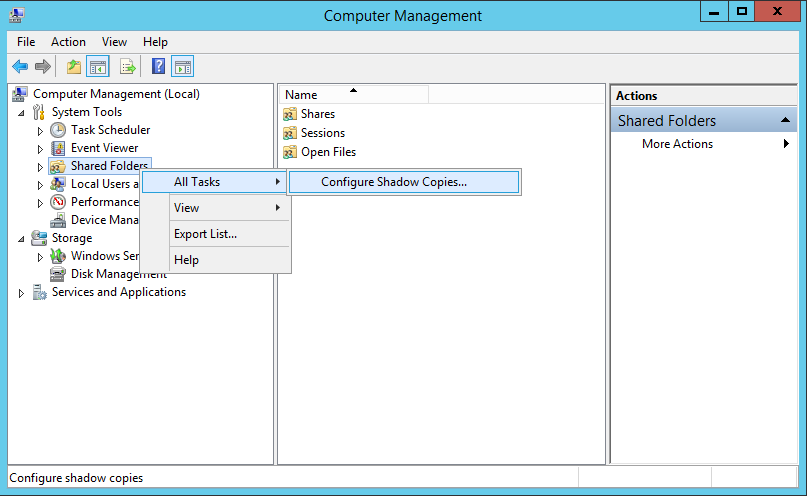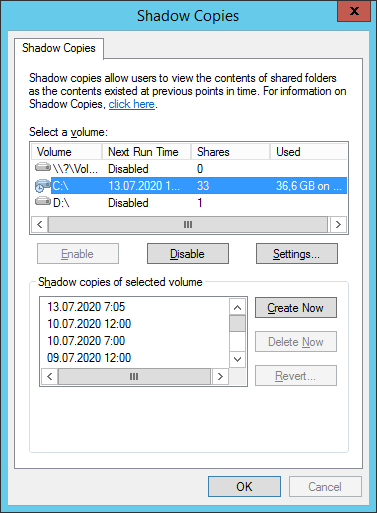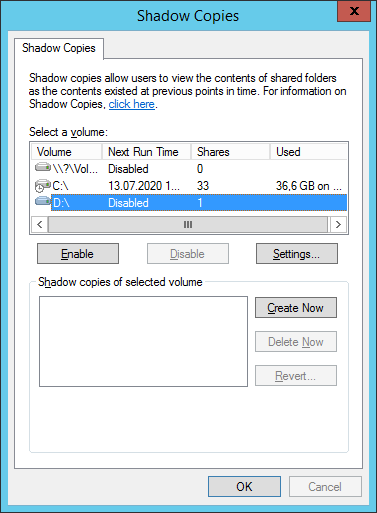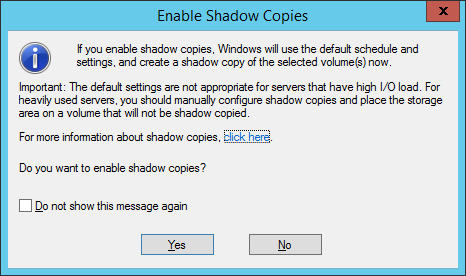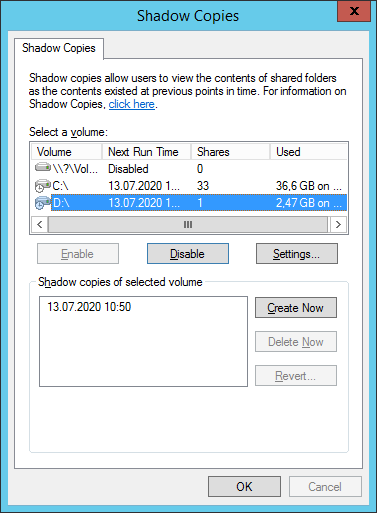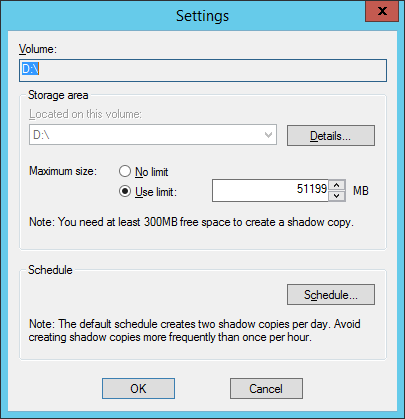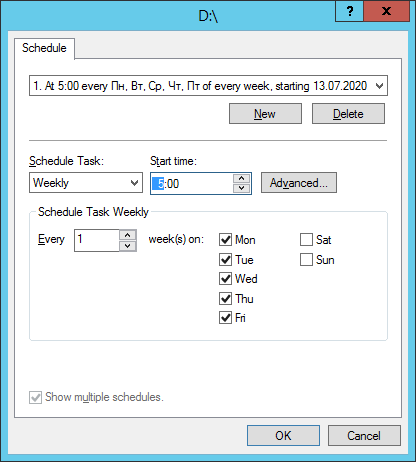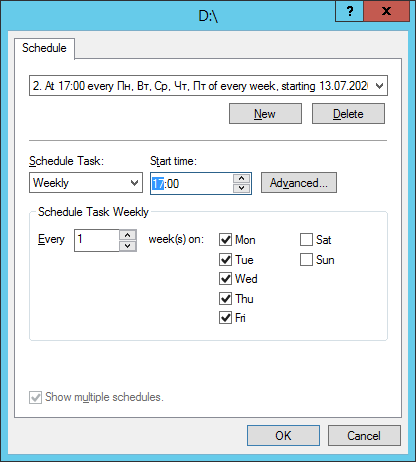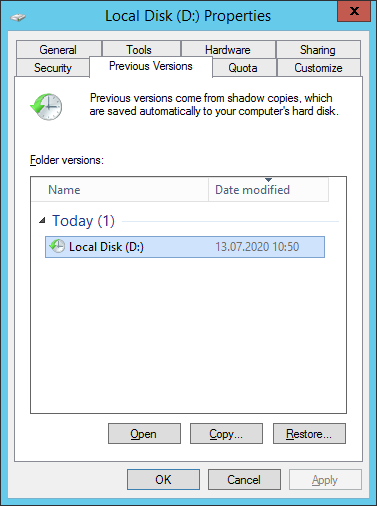Служба теневого копирования томов — Volume Shadow Copy Service (VSS) впервые на платформе Windows появилась целых десять лет назад еще в Windows Server 2003, однако до сих пор далеко не все администраторы Windows используют функционал данной службы. Даже существует мнение, что при наличии грамотной политике резервного копирования использовать теневое копирование тома нецелесообразно. Однако это далеко не всегда так.
Возьмем в качестве примера файловый сервер с множеством каталогов и большим количеством пользователей, бэкап которого выполняется, допустим, ежедневно. Представим ситуацию, что пользователь в начале рабочего дня внес важные изменения в некий сверхкритичный документ, а в течении рабочего дня, случайно его модифицировал или удалил. Восстановить данный документ из резервной копии не получится, т.к. он в нее просто не попал. Настроить традиционный бэкап файлового сервера в течении рабочего дня технически затруднительно (да и сама процедура создания и восстановления из такого бэкапа может занять довольно много времени, усугубляющаяся использованием инкрементального или дифференциального бэкапа). В такой ситуации «спасти» положение может теневое копирование данных с помощью службы Volume Shadow Copy Service.
Эта статья посвящена настройке теневого копирования томов (Volume Shadow Copy) в новой серверной ОС Windows Server 2012.
Рассмотрим основные преимущества службы VSS по сравнению с классическими средствами резервного копирования данных:
- Высокая скорость создания резервных копий
- Возможность самостоятельного восстановления файлов пользователями (при наличии прав на запись в каталог)
- Возможность копирования используемых (заблокированных) пользователями файлов
- Небольшой размер копий (по информации MS около 30 Мб на 1 Гб данных)
Основные особенности работы службы теневого копирования томов
Что же такое теневая копия? По сути это снапшот (снимок) всей информации, хранящейся на диске. После создания теневой копии служба VSS начинает отслеживать изменение данных на диске. VSS разбивает все данные на блоки по 16Кб каждый, и если данные в таком блоке были изменены, служба записывает в файл теневой копии этот блок целиком. Таким образом получается, что при создании следующей теневой копии данных система не копирует данные целиком, а только лишь блочные изменения. Благодаря этому система теневого копирования позволяет существенно сэкономить место на диске. Теневые копии могут храниться на том же диске, на котором хранятся данные, либо на отдельном (решение для высоконагруженных систем с большой частотой изменения данных). Все файлы теневых копий хранятся в служебном каталоге System Volume Information. Эти файлы можно отличить по имени, все они содержат в имени идентификатор службы VSS — 3808876b-c176-4e48-b7ae-04046e6cc752.
Еще несколько особенностей VSS:
- По-умолчанию максимальное количество хранимых снапшотов для диска – 64. При превышении этого значения, служба VSS начинает циклическую перезапись теневых копий, удаляя самые ранние снапшоты.
- Под теневые копии система выделяет 10% емкости раздела, однако это значение можно изменить.
- Теневое копирование включается для тома целиком, и включить его для отдельной общей папки невозможно.
- Microsoft не рекомендует создавать снапшоты чаще, чем раз в час (однако, это всего лишь рекомендации).
Настройка теневого копирования сетевого каталога в Windows Server 2012
Попробуем настроить теневое копирование данных общей сетевой папки, расположенной на отдельном диске сервера с ОС Windows Server 2012.
Откройте оснастку «Управление компьютером» («Computer Management»), разверните блок «Служебные программы», щелкните правой кнопкой мыши по элементу Общие папки и выберите Все задачи -> Настроить теневые копии.
Затем нужно включить теневое копирование для раздела, на котором хранятся общие сетевые папки. Для этого выберите нужный том и нажмите кнопку «Включить». В этот момент будет создана первая теневая копия раздела (снапшот).
Далее необходимо задать максимальный размер копий и периодичность (расписание) их создания. Нажмите кнопку Параметры.
В данном примере настроим создание теневых копий по следующей схеме: снапшоты общих папок должны создаваться ежедневно в течении рабочего дня (с 9:00 до 19:00) каждые 10 минут. Вы, естественно, основываясь на особенности бизнес-процессов компании, можете настроить собственное расписание.
Если через некоторое время открыть свойства общей папки и перейти на вкладку «Предыдущие версии», то можно увидеть список доступных на данный момент теневых копий.
Далее у пользователя есть три варианта действия: просмотреть содержимое копии (Открыть), скопировать данные из копии в другое место (Копировать) или восстановить данные с перезаписью (Восстановить)
При попытке восстановить содержимое копии на момент снапшота появится соответствующее предупреждение.
VSS — отличное средство, позволяющее пользователям в течении дня оперативно и в удобной форме восстановить удаленный файл или откатиться к предыдущей версии документа. Нужно не забывать, что теневое копирование не отменяет необходимость выполнения классического резервного копирования данных, позволяющего восстановить данные даже в случае аппаратного сбоя.
Отметим также, что функция теневого копирования в Windows 8 была заменена на функцию File History
In this post, we’ll learn the steps to enable Volume Shadow Copy (VSC) in Server 2012 R2. Volume Shadow copy service (VSS) is a technology of Microsoft through which we can take backup of files, folders, and volumes. Using VSS we can either take backup manually or schedule it for automatic backup. Volume Shadow copy service (VSS) is also known as Previous Versions. Through the snapshots of files and folders taken by VSC, we can revert back the files as per our requirements.
Steps to take System State Backup
Steps to configure Volume Shadow Copy (VSC) in Windows Server 2012 R2:
1. For this practical, we have created a text file naming IT in E: drive. You can also create a folder and create file in that.
2. To Enable Volume Shadow copy, right click on the drive for which you want to enable Volume Shadow Copy (VSC) i.e. E: drive for this practical and then click on “Configure Shadow Copies”.
3. On Shadow Copies console, we can select the drive on which we want to enable volume shadow copy. Select the E: drive and then click on “Enable“.
4. After clicking on Enable, it opens the Enable Shadow Copies console, this console tell us about the shadow copies. The information contains that the Windows will use the default schedule and settings. Click on Yes to enable Volume Shadow Copy Services (VSS).
5. VSC of selected volume is created, it would show the time and date. Click on OK to continue.
6. Now, we will modify the text file naming IT which we have created earlier.
7. Again we are creating a new shadow copy of E: drive by click on Create Now.
8. On Shadow Copies console, We can see that the new shadow copy of E: drive is created.
9. Select the previous shadow copy and click on “Revert“. As we click on the Revert option all the changes made after the snapshot will vanish. Or we can say, that the file will be reverted back to the state when the first snapshot is taken.
10. After clicking on Revert, it opens the Volume Revert console, which shows details about the shadow copy. Select the option of “Check here if you want to revert this volume” and click on Revert Now to continue.
11. On Shadow Copies console, we can see that reverting of volume E: is 100% completed. Click on Ok to close this console.
12. Now open the file to verify if it has been successfully reverted back to its previous state. If you can see old contents then it indicates that the VSC is working properly.
13. On Shadow Copies console, click on Settings to modify the various settings related to the VSS.
14. On Settings console, we can change the allocated space for shadow copy but minimum 300 MB free space is required to create a VSC. We can also schedule the creation of shadow copies by clicking on the option of “Schedule“.
15. On Schedule console, we can modify the settings of default schedule. By default, the snapshot is scheduled once a day except weekends. We can create a new schedule or modify the default schedule as per our requirements.
Hope you understood the steps to configure Volume Shadow copy services (VSS) in Windows Server 2012 R2. Please feel free to leave your comments and suggestions in the comment section below.
When you shadow copy a disk volume, you are actually generating a snapshot of the changes made to the folders and files within the disk volume at a certain point in time. Windows 2012 R2 shadow copy feature allows taking snapshots at set intervals, so that users can revert and restore their folders and files to a previous version.
The shadow copy feature for backups is a much faster solution compared to the traditional backup solution. We should keep in mind that shadow copy is not meant as a replacement for the traditional backup process. The shadow copy process never copies all the files and folders, but only keeps track of the changes made to them. This is the reason shadow copy cannot replace the traditional backup process. Typically, shadow copies are useful in scenarios where one needs to restore an earlier version of files or folders.
To configure shadow copy of a shared folder in Windows Server 2012, at first, you have to enable the shadow copy feature on the disk volume containing the shared folder. The shadow copy process works only at volume level and not on individual files or directories. Additionally, it works only on NTFS volumes and not on FAT volumes. After generating a snapshot of the data, the server keeps track of changes occurring to the data.
Typically, the server stores the changes on the same volume as the original, but you can change the destination. Additionally, you can define the disk space allocated to shadow copies. As the allocated disk space fills up, the server deletes the oldest shadow copy snapshot, thereby making room for newer shadow copies. Once the server has deleted a shadow copy snapshot, you cannot retrieve it. Windows Server 2012 R2 can keep a maximum of 64 shadow copies per volume.
Running a Windows Hyper-V or VMware Server? Hyper-V & VMware Backup made easy with Altaro’s Free VM Backup Solution. Download Now!
Install File and Storage Services
The shadow copy feature requires prior installation of all the File and Storage Services. For installing or verifying the installation of all the File and Storage Services, logon to the server as a local administrator, go to the Server Manager Dashboard and click on Add Roles and Features.
Figure 1. Server Manager Dashboard
This opens the Add Roles and Features Wizard, wherein go to Server Selection to select the server on which you want to install the File and Storage Services:
Figure 2. Selecting our Windows 2012 R2 Server from the server pool
Click on Next and select Server Roles. Expand the File and Storage Services and the File and iSCSI Services. Check that tick marks are visible against all the services. Click on those missing the tick marks:
Figure 3. Selecting File & Storage Services, plus iSCSI Services for installation
Click Next four times until you arrive at Confirmation:
Figure 4. Add roles and Features – Final confirmation Window
Click on Install to enable all the File and Storage Services. Once the server has completed the installation, click on Close.
Enabling the Shadow Copy Feature
After having confirmed that the server has enabled all File and Storage Services, go to the server desktop and open the File Explorer. You can do this by pressing the WINDOWS+E keys together on your keyboard or by clicking on the fourth icon from left on the bottom toolbar on the Windows Server 2012 R2 desktop:

Figure 5. Opening Windows File Explorer
We will enable shadow copy for the volume C:. Within this volume, we have our folder C:UsersChris_Partsenidis_Share for which we would like to ensure shadow copy is enabled:
Figure 6. Location of the folder we will be using as a Shadow-Copy example
Right-click on the Local Disk or volume C: (Or any other volume depending on your requirements) and select Configure shadow copies from the drop-down menu:
Figure 7. How to enable Shadow Copy for a Windows Volume
When the UAC confirmation dialog box opens, confirm with Yes. This opens the screen for Shadow Copies. Under Select a volume, click to select the volume C: from the list or any other volume for which you want to turn on shadow copies. Now, click on Enable.
A confirmation dialog will appear to Enable Shadow Copies along with a warning about file servers with high I/O loads:
Figure 8. Enable Shadow Copy confirmation window
Click on Yes to complete the process. You will be returned to the Shadow Copies screen and under Shadow copies of the selected volume, you can see the newly created Shadow Copy for volume C::
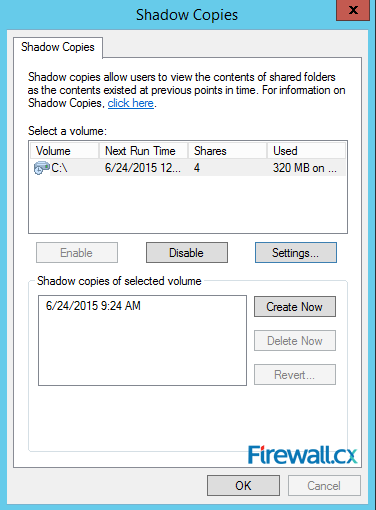
Figure 9. Viewing the status of Shadow Copy for our Volume
Click on Settings to open the Settings dialog. In the Settings dialog, under Maximum size, you can select either No limit for the space reserved or set a limit for it by selecting Use limit. Note that as stated in the dialog box, a minimum limit of 300MB is necessary for the space reserved for shadow copies:
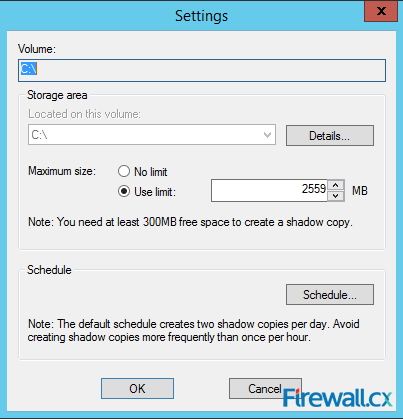
Figure 10. Setting the maximum size to be used by Shadow Copy for our volume
Next, you can either go with the default schedule of two snapshots of shadow copies every day, or define your own by clicking on Schedule to open the Schedule dialog:
Figure 11. Configuring the Shadow Copy Schedule
In the Schedule dialog, tweak the settings to fit your environment in the best possible way and click on Ok to return to the Shadow Copies dialog.
To create a current snapshot, click on Create Now and under Shadow Copies of Selected Volume, a date and time entry will appear, signifying that the server has created a shadow copy snapshot. Click on Ok to close the dialog.
Accessing Shadow Copies
Users can access the shared volume/folders from either their local server or from a client PC over the network. They can see the previous versions (shadow copies) of their folders and files from the Properties of the shared folder or file.
Go to File explorer and click on a shared volume — volume C: in our case. Select the shared folder within the shared volume – which, in our example, is C:UsersChris_Partsenidis. Right-click on the shared folder and go to Restore previous versions:
Figure 12. Viewing the Shadow Copy status of our shared folder
This opens the Properties dialog for the share folder — C:UsersChris_Partsenidis. The list under Folder versions has all the shadow copies created for the share folder – C:UsersChris_Partsenidis. From this list, you can select a specific previous version (shadow copy) and choose to Open, Copy or Restore it.
Figure 13. Accessing previous versions of our shared folder
After you have completed your work, click on Ok or Cancel to exit the dialog box.
This article explained the purpose Windows Shadow Copy services, how to enable and configure Shadow Copy for a Windows Volume. We also saw how administrators and users can access previous versions of folders/files that are located in a shadow-copy enabled volume.
Back to Windows 2012 Server Section
Posted: August 11th, 2015
Volume Shadows Copies (also known as Volume Snapshot Service or VSS) is a technology developed by Microsoft to take restorable snapshots of a volume.
On Windows Server 2012 // 2012 R2 it’s quite easy to set up and restore operations are pretty straightforward.
Note: Volume Shadow Copies allow to restore previous states of the entire volume, you can’t restore previous states of single files and/or folders.
Open the File Explorer and right-click on the volume where you want to enable Volume Shadow Copies. Select Configure Shadow Copies:
Select the volume and click Enable:
Microsoft suggests to use a dedicated drive to store Volume Shadow Copies in case of high-load. Click Yes:
A first snapshot will be generated. Default VSS settings work as following:
- Volume Shadow Copies will be stored in the same volume
- Volume Shadow Copies will take a maximum amount of 10% of the local disk space
- The system reserves a minimum of 300MB of disk space for the shadow copies
- The system schedules two shadow copies per day (7.00 AM and 12.00 PM)
To modify these settings click Settings:
The option panels are quite explicative:
To restore a previous snapshot just select it and click Revert:
Share:
Tags: Microsoft Windows
What Are Shadow Copies?
A shadow copy is a snapshot of a set of data, such as a file or folder.
Shadow copies provide the capability to recover files and folders based on snapshots of storage drives.
After a snapshot is taken, you can view and potentially restore previous versions of files and folders from that snapshot.
A shadow copy does not make a complete copy of all files for each snapshot.
Instead, after a snapshot is taken, Windows Server 2012 R2 tracks changes to the drive. A specific amount of disk space is allocated for tracking the changed disk blocks. When you access a previous version of a file, some of the content might be in the current version of the file, and some might be in the snapshot.
On this post this time, lets go through a very simple step how you can implement & configure shadow copies in Windows Server 2012 R2…
1- For this Shadow Copies demo, i will be using my F: drive which located in my OSI-SVR01 server…
right click F: drive and then click Configure Shadow Copies…
2 – In the Shadow Copies interface, click drive F:, and then click Enable…
3 – In the Enable Shadow Copies interface, click Yes…
4 – In the drive Shadow Copies interface, click Settings…
5 – In the Settings interface, click Schedule…
6 – In drive F: interface, change Schedule Task to Daily, change Start time to 3:00 AM, and then click Advanced…
7 – In the Advanced Schedule Options interface, select Repeat task, and then set the frequency to every 1 hours, then Select Time, and then change the time value to 2:58 AM…
8 – Click OK, and then in Settings interface, type 500 in Use limit: box and then click OK…
9 – next, open IT Consultant folder and then create a file call Profile…
Switch back to the Shadow Copies interface. It should be opened on the Shadow Copies tab and then click Create Now…
10 – under Shadow copies of selected volume notice that you should have new date & time for shadow copies…
11 – to simulate the shadow copies function, lets delete the profile.txt file…
12 – In File Explorer, right-click the IT Consultant folder, and then click Properties…
13 – In the IT Consultant Properties dialog box, click the Previous Versions tab…
then click the most recent folder version for IT Consultant, and then click Open…
14 – Confirm that Profile.txt is in the folder, right-click Profile.txt, and then click Copy…
15 – lastly, in the other File Explorer window, right-click the IT Consultant folder, and then click Paste…
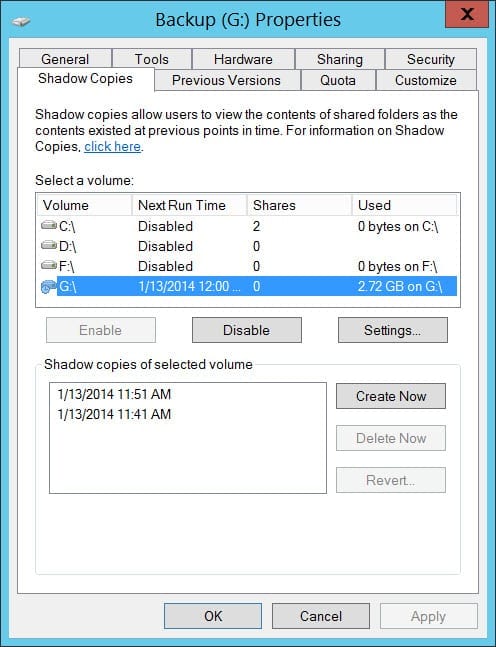
In this Ask an Admin post, I’ll show you how to enable shadow copies for a shared folder on a Windows Server 2012 R2 file server.
What Is a Shadow Copy?
A shadow copy of a disk volume or shared folder is a snapshot of changes made to files at a given point in time. Snapshots are taken at set intervals, allowing users to restore to a previous version of a file without having to ask IT to restore the file from a backup.
Configure Shadow Copies for a File Share in Windows Server 2012 R2
To configure shadow copies in Windows Server 2012 R2, log on to your file server with a local administrator account and follow the instructions:
- Switch to the server desktop and open File Explorer by using the icon on the desktop taskbar or by pressing WINDOWS + E.
- In File Explorer, right-click the volume where the share is located and select Properties from the menu.
- In the Properties dialog, switch to the Shadow Copies tab.
- Under Select a volume:, select the volume where you want to turn on shadow copies from the list, and then click Enable.
- In the Enable Shadow Copies dialog, click Yes to complete the procedure, noting the warning about file servers with high I/O loads.
- In the Properties dialog, you will see that shadow copies are now enabled for the volume, and when the next snapshot is scheduled to be taken.
Optionally, you can click Create Now to have a snapshot created immediately. There are also options to delete and revert to a previous shadow copy.
- Now click Settings in the Properties dialog.
- In the Settings dialog, you can view information about where the shadow copies are located and change the reserved disk space available to the Volume Shadow Service (VSS).
- The default schedule takes two snapshots daily: Monday to Friday. If you want to change these settings, click Schedule and add or remove scheduled tasks as required.
- Click OK in the Settings dialog, and again in the Properties dialog to complete the configuration.
Restore Files Using Previous Versions
Windows 7 (and later) clients support restoring from file shares where shadow copies are enabled.
- From a supported client, or locally from Windows Server, right-click the file you want to revert and select Properties from the menu.
- In the Properties dialog, switch to the Previous Versions tab.
- If there is a copy of the file available to restore, it will be displayed in the list, with the time and date of the copy.
- Select a previous version of your file from the list.
- Now you can decide to restore, open, or copy the file as appropriate and follow the instructions.
- Close the Properties dialog when you’re done.
What are Shadow Copies?
A shadow copy is a snapshot of a set of data, such as a file or folder.
It works by Windows periodically crawling the system and looking for file changes made since the last crawl and recording the changes. These changes are indexed and stacked on top of each other which creates a history of the file/folder.
Shadow copies provide the capability to recover files and folders based on snapshots of storage drives.
After a snapshot is taken, you can view and potentially restore previous versions of files and folders from that snapshot.
A shadow copy does not make a complete copy of all files for each snapshot.
Instead, after a snapshot is taken, Windows Server 2012 R2 tracks changes to the drive. A specific amount of disk space is allocated for tracking the changed disk blocks. When you access a previous version of a file, some of the content might be in the current version of the file, and some might be in the snapshot.
This is done in the background as a system level process which isn’t subject to the same limitations as user initiated file operations. As a result, the system is able to capture changes to files which are locked to the user.
So in order to access a locked file, we simply need to access the latest shadow copy. The same method is used by Windows Backup and other backup products to backup the file(s) when it is open or used by any applications.
Step by Step Procedures:
For this demo, I am going to enable volume shadow copy for my C Drive.
Right Click Drive and Select Configure Shadow Copies.
In the Shadow Copies interface, select drive and then click Enable.
In the notification Click Yes.
In the drive Shadow Copies interface, click Settings.
In the Settings interface, you can set the maximum size or space for the shadow copy.
In this demo, I am selecting 1000MB.
Then Click Schedule, to configure the schedules to run shadow copies.
Scheduled Tasks available options are
Daily, weekly, monthly, once, at system startup, at logon, at idle.
Then Click Advanced option, select Repeat task, and then set the frequency to every 1 hour, then Select Time, and then change the time value.
Now we will test this shadow copies.
Create a folder/file on the drive for which shadow copy enabled.
Switch back to the Shadow Copies interface. It should be opened on the Shadow Copies tab and then click Create Now.
Note: For this demo I am manually creating now, or else according to our schedule it will run every one hour automatically.
After Clicking Create Now, we see new time stamp created which confirms new shadow copy created.
To test, I am deleting the file created (shadow copy test) on my C drive.
Now right-click the folder where the file existed (Shadow Copy) and then click Properties or Restore Previous Versions.
Click the most recent folder or any previous version and then click Open.
When you open you can see the file which we deleted. Now if want copy and paste this file to the required location.
You can also Copy & Restore.
If you restore then it replaces the existing file if any exists. But in our demo we deleted the file so no issues.
In production environment try to use the option open or copy.
When I select option Copy, it asks where to copy the file.
When I select the option Restore, it will warn saying the existing file will be replaced.
Now finally, we see the deleted file has been restored.
Если кто-то удалит… Нет, не так. Когда кто-то слишком умный и обременённый лишними правами удалит пару папок с файлового сервера, то у админа начнётся нервный тик, если админ заранее не настроил теневое копирование тома. Особенно обидно, если этот криворукий умник — ты сам.
Настраиваем теневое копирование тома на примере сервера Windows Server 2012 R2. Применимо к:
- Windows Server 2019
- Windows Server 2016
- Windows Server 2012 R2
- Windows Server 2012
- Windows Server 2008 R2
- Windows Server 2008
- Windows 10
- Windows 8.1
- Windows 8
- Windows 7
Ссылки
https://docs.microsoft.com/ru-ru/windows-server/storage/file-server/volume-shadow-copy-service
Настройка теневой копии
У меня на сервере уже настроено теневое копирование диска C:, сделаем то же самое на диске D:.
Заходим в управление компьютером:
compmgmt.mscПравой кнопкой на Shared Folders > All Tasks > Configure Shadow Copies…
Открывается окно управления теневыми копиями.
Видим, что теневые копии диска C: настроены, а диска D: отключены — Disabled.
Выделяем диск D: и включаем теневое копирование, Enable.
Yes.
Создаётся первая теневая копия. По умолчанию копии создаются два раза в сутки, в 7 утра и в 12 дня по будням. Поскольку у диска C: такое же расписание, то настроим для диска D: немного другое время. Settings.
Система хранит 64 копии, потом начинает циклическую перезапись. По умолчанию размер теневых копий ограничен 10% размера диска, это число можно изменить при необходимости. Но сейчас меня интересует расписание — Schedule…
Устанавливаю копирование на 05:00 по будням.
И на 17:00 по будням. У вас может быть настроено своё расписание.
В свойствах диска можно посмотреть список теневых копий и перейти к нужной для восстановления файлов.




















